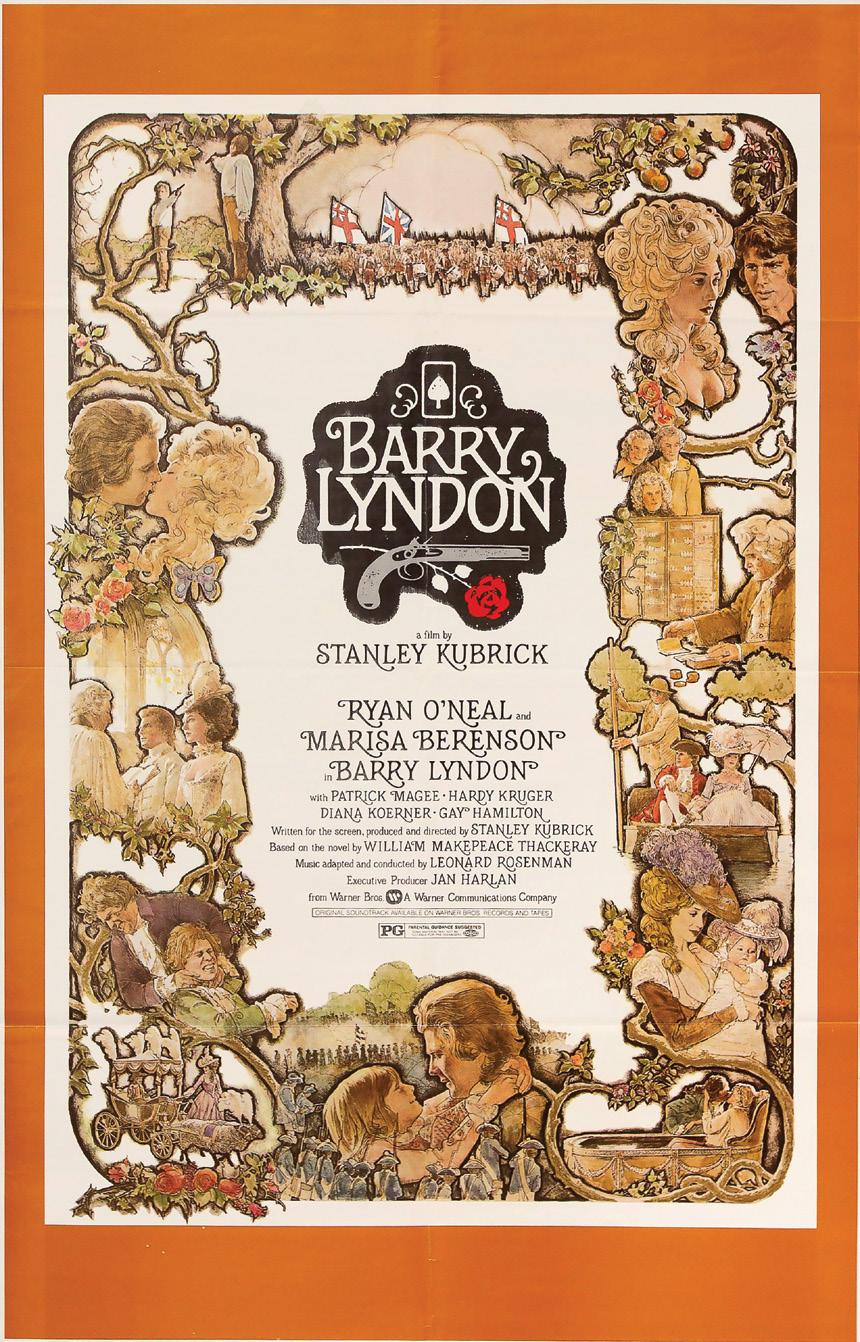
4 minute read
Moving Pictures
“A Slow, Moody Movie”
STANLEY KUBRICK’S ‘BARRY LYNDON’ PAINTS THE BELCOURT IN 35MM
BY JOE NOLAN, FILM CRITIC
Writer and director Stanley Kubrick released Barry Lyndon in 1975 in the aftermath of the controversial A Clockwork Orange (1971), and the wreckage of a years-long-pre-production for a Napoleon film that was never meant to be. If A Clockwork Orange is a flamethrower then Barry Lyndon is a fragrant wad of tobacco smoldering in a brass pipe. Editor Tony Lawson paces the film between footfall and horse gallop, and cinematographer John Alcott deployed photography equipment developed for NASA to use in deep space to capture scenes lit only by candles. Barry Lyndon is a slow, moody movie, and patient viewing is rewarded with general satiric hilarity, unique performances and some of the most sumptuous frames in film.
This costume drama begins in Ireland in the 1750s. Barry’s father is killed in a duel over a horse sale gone bad, and Barry is spoiled by his doting widowed mother. Barry grows up and fights a duel of his own for the love of his cousin Nora, which results in his running away from home and into a series of lucky breaks, misadventures and twists of fate. Barry is an orphan before he is a rich man before he ultimately arrives at his destiny. Along the way he’s a swordsman, a robbery victim, a soldier, a deserter, a hero, a spy, a gambler, a gold-digger, a drunk, an abuser, and — unfortunately — a duelist.
Ryan O’Neal was the leading man’s leading man in the 1970s — he became a TV star on Peyton Place in the 1960s before his Oscar-nominated turn in Love Story (1970). The actor starred in two Peter Bogdanovich films before working with Kubrick (What’s Up, Doc in 1972 and Paper Moon in 1973). O’Neal had had big hits, but his movie idol looks and romantic resume left the movie press scratching its collective head when he was announced as the lead in a new Kubrick film. Frankly, O’Neal is perfectly cast as the spoiled, lazy, dumb and daring Lyndon. O’Neal makes the protagonist’s picaresque part adventure story, part cautionary tale, and part running joke about a hapless man-boy buffeted by the rigors of 18th century living at every social station. Some critics pointed at O’Neal’s performance when Barry Lyndon originally opened to lukewarm reviews. But, today Barry Lyndon is generally regarded as another Kubrick masterpiece, and O’Neal’s performance is being appreciated for the director's genius casting and the actor’s subtle breadth.

Barry Lyndon ’s slow storytelling and muted performances haven’t always been for everyone, but nobody ever doubted the technical achievements of this simply ravishing work of cinema art. Kubrick brings his period to life with probably-still-unmatched-authenticity using special techniques and equipment — like those NASA camera lenses — and a variation of the kind of coldly-stylized performances we find in every Kubrick film from Lolita (1962) to The Shining (1980). The film’s look captures a world before electric light and the industrial age, and its low-key performances reflect the strictures of social class during the Georgian era. Kubrick composed his shots like period paintings and the sometimes stone still scenes in this film will have you leaning closer looking for the brush strokes. Barry Lyndon was nominated for seven Academy Awards. It lost in the Best Picture, Best Director and Best Screenplay categories, but walked away with no contest wins for Best Art Direction, Best Costume Design, Best Cinematography, Best Scoring. The Belcourt Theatre is screening Barry Lyndon this weekend on 35mm film. I haven’t seen this print, but you’ll probably get plenty of that good analog celluloid grit to go along with this film that every movie fan should see on a big screen.
Barry Lyndon is a Weekend Classic at The Belcourt Theatre on April 1–2. Go to www.belcourt.org for times and tickets.
Joe Nolan is a critic, columnist and performing singer/songwriter based in East Nashville. Find out more about his projects at www. joenolan.com.







